“Guys, where’s the invoice for that firewall upgrade last quarter?” asked Jason, the IT Operations Lead, during a surprise internal audit.
Stella from procurement replied, “I think it’s on one of the shared drives… or maybe with Finance?” Meanwhile, Roman, the System Admin, had no idea who was using half the software licenses in the network.
This is classic IT asset chaos: too many tools, scattered records, and no clear visibility.
That’s where IT Asset Management (ITAM) steps in. ITAM is the structured process of tracking and managing all hardware and software assets, from purchase to retirement. It ensures assets are used wisely, kept secure, and compliant with policies.
In 2025, ITAM is not just helpful, it’s critical. From optimizing costs and tightening security to staying audit-ready, the right ITAM system does it all.
This blog explores the best IT Asset Management tools for 2025 to help you find a solution that fits your workflow and goals.
How to Select the Best IT Asset Management Tool for Your Needs
Choosing the right IT Asset Management (ITAM) tool goes beyond checking off features. It’s about finding a solution that fits your asset environment, internal workflows, and future growth plans. Here’s what you should look for:
Asset Discovery Capabilities
The tool should offer flexible options to automatically discover your assets. Look for support for agent-based and agentless discovery, network scanning, cloud asset discovery, and integration with systems like SCCM or Intune.
Inventory Management
A strong IT asset tracking software should give you detailed hardware and software inventories. It should track warranty status, user assignments, and all the essential details that help you manage assets more effectively.
Software Asset Management (SAM)
License tracking is a major requirement. The tool should provide compliance reports, software usage metering, and suggestions to optimize licensing costs. Leading software asset management tools also help maintain visibility across diverse environments and improve software governance.
Lifecycle Management
Beginning from procurement, the system should provide complete lifecycle tracking of assets, working through deployment and maintenance to reach retirement or disposal.
CMDB Integration or Functionality
Should your company have a configuration management database, your ITAM product should either interface with it or incorporate such capability. This covers relationship mapping between assets and giving IT service management activities background.
Reporting and Analytics
Search for pre-built reports with fast access to insights and custom dashboard creation capability. This facilitates general cost control, tracking of compliance, and use patterns.
Integration Capabilities
Your current tools should fit the ITAM program really nicely. Working with service desks, financial systems, HR systems, security tools guarantees flawless processes and correct data exchange.
Ease of Use and Deployment
A user-friendly interface and straightforward setup process are essential for a good ITAM. Your staff should be able to pick up fast system use without requiring in-depth technical support or training.
Scalability
Your company should expand alongside the platform. Whether you’re adding more assets, users, or office locations, the tool should remain responsive and effective as your operations expand.
Pricing Model
Review how pricing is structured. Some tools charge per asset, some per user, and others offer feature-based tiers. Pick a model that suits your current needs while allowing room to scale affordably.
Benefits of Implementing Robust ITAM Software
Notable Financial Savings
Reliable ITAM software guarantees hardware is used effectively over its lifetime and helps you prevent overspending on software licenses. Your increased awareness of your actual needs helps you to control costs.
Improved Security Posture
With full visibility into all your IT assets, it’s easier to spot outdated systems, unpatched software, or unauthorized devices. ITAM tools help your team act faster and stay ahead of vulnerabilities.
Enhanced Compliance and Audit Readiness
Staying compliant with software licenses and regulatory standards becomes much easier. You have access to the reports and tracking needed for audits, so you’re never caught off guard.
Increased Operational Efficiency
When IT teams can see the full context of an asset, it speeds up incident resolution. It also reduces time-consuming acquisition and disposal by organizing them more orderly.
Data-Driven Decision Making
Choosing one of the top ITAM tools provides you with insights that enable you to make better decisions regarding what to buy, update, or retire.
Reduced Shadow IT and Risk Exposure
Unapproved software and devices often slip in unnoticed. ITAM software helps detect these blind spots early so you can reduce risks before they become serious issues.
Optimized Resource Utilization
Understanding how your assets are being used will help you to reassign unused equipment, retire extraneous tools, and guarantee that highly sought-after items are always available.
The 12 Best IT Asset Management (ITAM) Tools in 2025
1. Motadata ServiceOps (ITAM Module)
Motadata’s IT Asset Management (ITAM) module is a core part of the ServiceOps platform, an AI-enabled, ITIL-compliant solution built for digital enterprises. As one of the best IT Asset Management tools, it provides full visibility and control over both IT and non-IT assets.
Motadata, which was built with automation and compliance first in mind, easily combines ITAM with ITSM systems to maximize resources, enable faster incident response, and save running costs. Through aggregating asset data with service and operational intelligence, the platform also helps contextual decision-making.
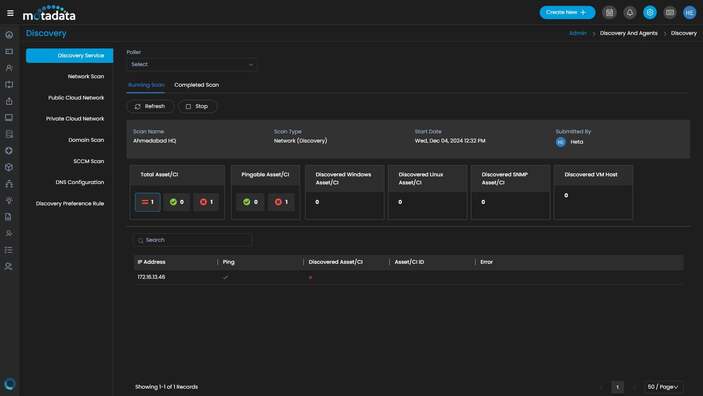
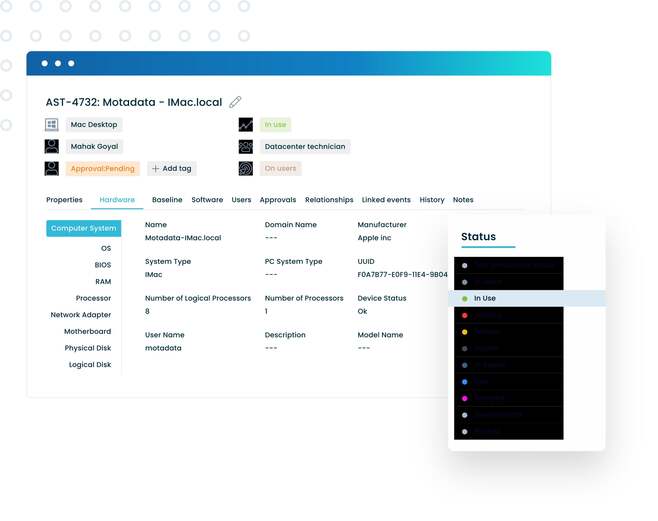
Key Features
-
Automated Asset Discovery
-
Unified Asset Inventory
-
Lifecycle Management
-
CMDB Integration
-
Software License Management
-
Policy-Driven Automation
-
Compliance Controls
-
ITSM Integration
-
Custom Dashboards & Reports
-
Remote Access Tools
Other Modules of Motadata ServiceOps
Customer Reviews
Pros and cons of Motadata ServiceOps
Pros & Cons
- ITIL-aligned and PinkVERIFY-certified
- Strong integration between ITAM and ITSM ensures rich contextual visibility
- The automation-first approach reduces manual intervention and human error
- Highly customizable reports and dashboards for data-driven decisions
- Enhances compliance and security through audit trails and asset tracking
- Offered as part of the broader ServiceOps suite,may be too extensive for those seeking a lightweight, standalone ITAM-only tool
- While versatile, SAM-specific features may not match the depth of dedicated software asset management solutions like Flexera
Motadata ServiceOps is a feature-rich, enterprise-grade solution that ranks among the best IT Asset Management tools for 2025,especially for organizations seeking end-to-end lifecycle automation, compliance control, and deep ITSM integration within a single platform.
2. ServiceNow IT Asset Management
ServiceNow IT Asset Management is a robust, enterprise-focused IT asset tracking software built on the Now Platform. It excels in unifying asset, service, and operations management across complex IT environments.
With deep platform integration and extensive automation capabilities, it is designed for organizations with mature IT processes and the resources to support broad platform adoption.
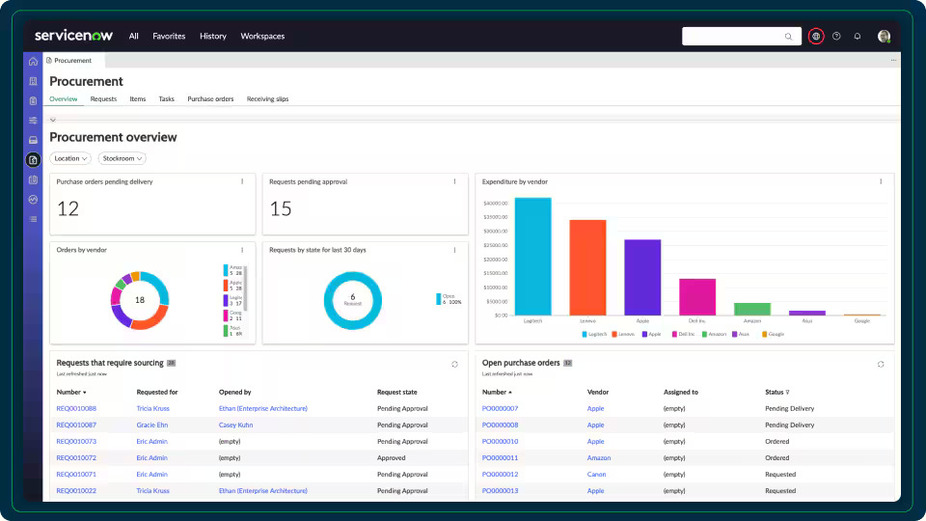
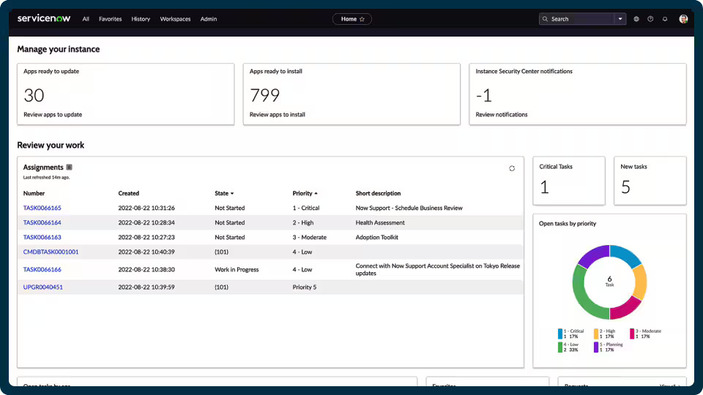
Key Features
- Lifecycle management for hardware, software, and cloud assets
- Software Asset Management Professional (SAM Pro) for optimization and compliance
- CMDB integration with asset-to-service relationship mapping
- Vendor and contract management
- Workflow-driven automation
- Data normalization and license reconciliation
Pros and cons of ServiceNow
Pros & Cons
- Trusted by large enterprises with complex IT environments
- Strong ecosystem integration within the ServiceNow platform
- Highly configurable and scalable
- Rich SAM functionality for license control and optimization
- Requires considerable implementation effort and platform expertise
- Total cost of ownership can be high, especially for smaller teams
- May be more than what’s needed for organizations seeking streamlined, focused ITAM functionality
ServiceNow ITAM is a top-tier solution for large enterprises with the infrastructure to leverage its full potential. For organizations prioritizing faster time-to-value, unified IT operations, and native alignment with ITSM and compliance workflows, platforms are offering equally effective capabilities with more operational simplicity.
3. ManageEngine Asset Explorer
Designed for IT teams looking for complete control and view over their hardware and software assets, ManageEngine AssetExplorer is a complete ITAM solution. Offering a broad range of tools for finding, tracking, and managing IT assets during the lifecycle, it is available both on-site and cloud.
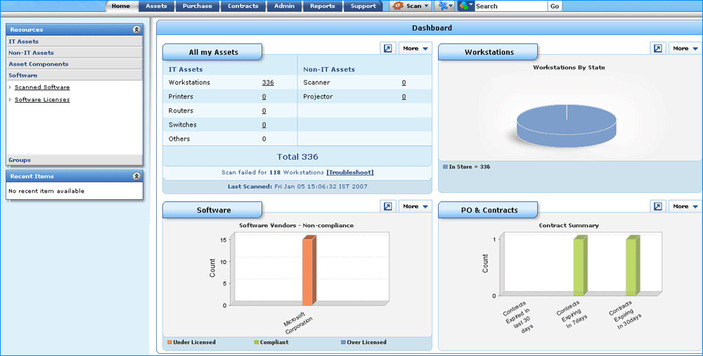
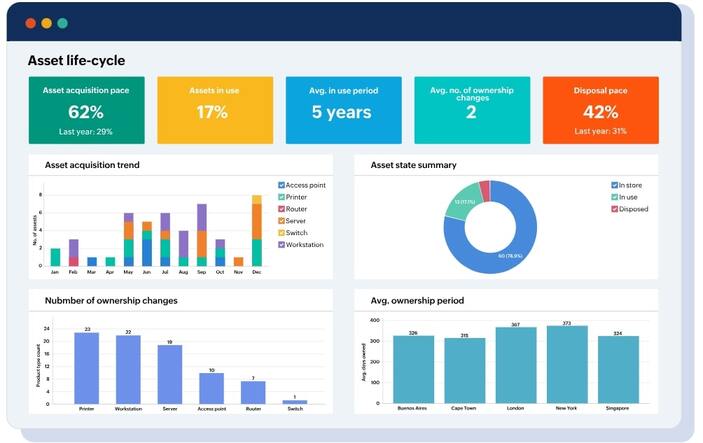
Key Features
- Agent-based and agentless discovery methods
- Hardware and software inventory management
- Always-on software license compliance monitoring
- Purchase order and contract management system
- Built-in CMDB with configuration management
- Barcode/QR code/RFID support
- Drag-and-drop lifecycle visualizations and custom workflows
- Integration with ManageEngine tools like Endpoint Central, ServiceDesk Plus, and Zoho Analytics
Pros and cons of ManageEngine
Pros & Cons
- Feature-rich for its price point
- Offers flexible deployment (On-Premise and Cloud)
- Tight integration within the ManageEngine ecosystem
- Strong reporting with dashboards and query builder
- Fast setup and ROI, especially for mid-sized IT environments
- UI and UX may feel less modern compared to newer platforms
- Deep software asset management tools optimization may require added effort or third-party modules
- Customizations can depend on low-code scripting and familiarity with the Zoho environment
AssetExplorer is a solid choice for organizations that want a traditional yet capable ITAM platform with flexible deployment. That said, as IT environments become more hybrid and cloud-first, newer ITAM solutions are taking a more unified, user-centric approach, reducing friction in workflows and offering out-of-the-box alignment with rapidly evolving enterprise needs.
4. Freshservice (Asset Management Module)
A closely integrated IT asset management module is part of Freshworks’ cloud-native ITSM platform, Freshservice. It is popular among mid-sized and corporate businesses seeking an easy-to-use solution with innovative automation and artificial intelligence features because of its clear interface and quick return on investment.
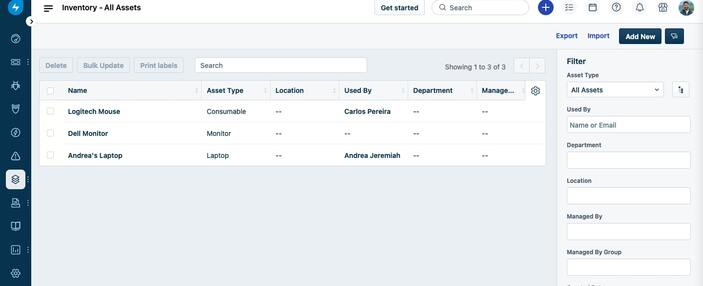
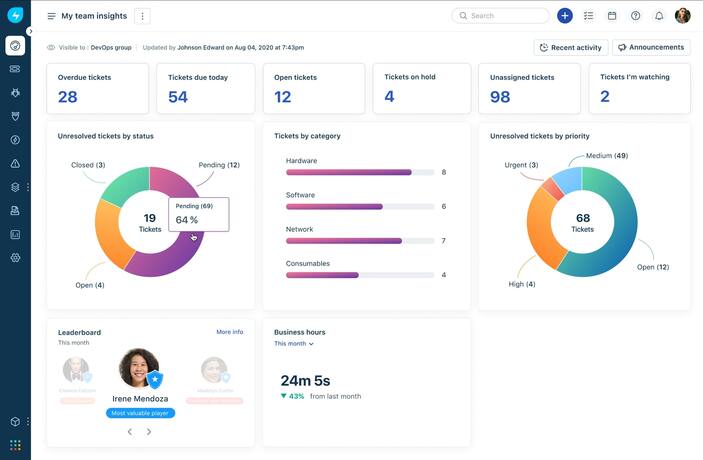
Key Features
-
Integrated asset discovery via agent and probem
-
Hardware and software inventory management
-
Contract and software license management
-
Lifecycle tracking and purchase order handling
-
Advanced CMDB with relationship mapping
-
Seamless integration with ITSM, ITOM, and business workflows
Pros and cons of Freshservice
Pros & Cons
- Extremely intuitive UI and fast onboarding
- Built-in AI to accelerate service delivery and self-service
- Unified platform for IT, HR, and Ops teams
- Offers good scalability and automation with no-code workflows
- Primarily cloud-based, no on-premises option for asset management
- While sufficient for most, advanced software asset management tools may not be as comprehensive as those offered by SAM-dedicated platforms
- Enterprise features like Freddy AI Insights or sandbox environments are gated to higher plans
Freshservice delivers excellent value for organizations prioritizing ease of use, fast implementation, and AI-driven automation. For businesses focused on unified ITSM and ITAM operations with minimal overhead, it’s a strong contender.
However, when conducting an ITAM comparison against platforms tailored for deeper compliance control or hybrid deployments, Freshservice may require complementary tooling to bridge functionality gaps, particularly in complex enterprise environments.
5. SolarWinds Service Desk (ITAM Module) / SolarWinds Hybrid Cloud Observability
SolarWinds provides IT asset management capabilities through both its cloud-based Service Desk and the Hybrid Cloud Observability platform. Designed to offer fast time to value, its ITAM features focus on automated discovery, visibility, and lifecycle control, while seamlessly integrating with incident, change, and configuration management processes.
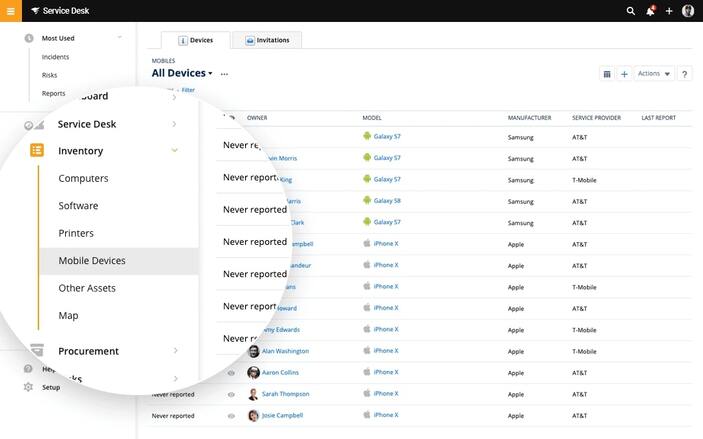
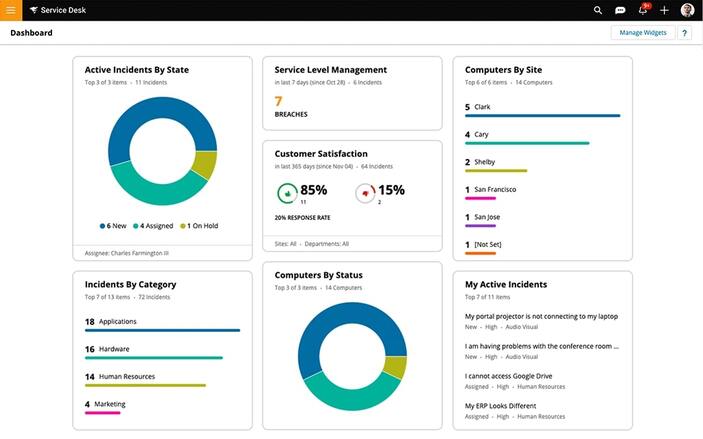
Key Features
-
Automated asset discovery and inventory tracking
-
Hardware & software asset visibility
-
Risk detection and compliance features
-
CMDB for infrastructure-to-application mapping
-
Integrates natively with SolarWinds observability and monitoring tools
Pros and cons of SolarWinds
Pros & Cons
- Strong synergy with SolarWinds’ IT monitoring and observability ecosystem
- AI-assisted ticketing and service operations in the Service Desk
- Cloud-native design with multi-channel user support (web, Teams, Slack, mobile)
- Flexible and scalable for both SMBs and enterprises
- Licensing structure can be complex, depending on product mix (element vs. technician-based)
- The depth of software asset management features may vary depending on deployment type (Service Desk vs. Hybrid Cloud Observability)
SolarWinds stands out in the 2025 ITAM Tools landscape by combining traditional ITAM capabilities with robust ITSM and observability layers.
Expanding into ITAM with their integrated Service Desk or Hybrid Cloud Observability suite gives a strategic edge for companies already utilizing SolarWinds for network or infrastructure monitoring, therefore minimizing tool sprawl and improving visibility across the digital estate.
6. Lansweeper
Considered as a basic layer for IT asset management techniques, Lansweeper is well-known for its agentless, in-depth network discovery and thorough IT inventory capabilities.
It excels in environments where full-spectrum visibility and accurate data are critical, and is often used in tandem with other ITSM or SAM solutions to complete the asset lifecycle picture.
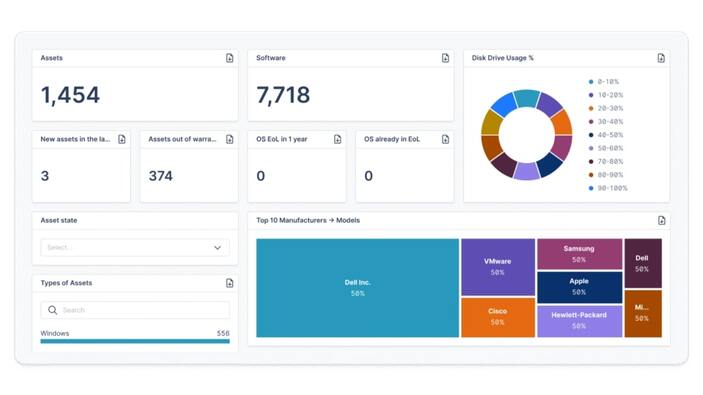
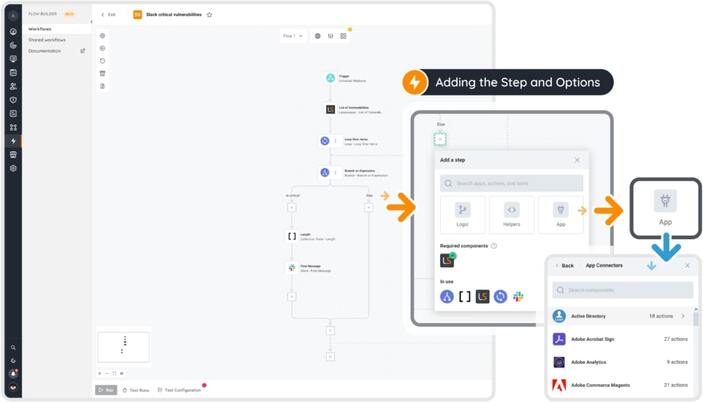
Key Features
-
Powerful agentless asset discovery across IT, OT, IoT, and cloud environments
-
Detailed hardware inventory software capabilities with real-time insights
-
Credential-Free Device Recognition (CDR)
-
Centralized, always-updated inventory and compliance tracking
-
Unified data platform supporting integrations with ServiceNow, Atlassian, and more
Pros and cons of Lansweeper
Pros & Cons
- Deep discovery capabilities, captures nearly every device and endpoint
- Rich, accurate inventory data supports better operational decisions
- Automates visibility for remote and BYOD assets
- Integrates with ITSM, CMDB, and cybersecurity tools to enrich workflows
- Not a full-featured ITAM suite,lacks robust lifecycle workflows or contract/license management
- For end-to–end ITAM or SAM coverage, it calls for integration with complimentary systems.
Delivering unmatched discovery and visibility across ever more complicated IT systems, Lansweeper is a data powerhouse in the hardware inventory software space.
Although it might not provide whole asset lifecycle or compliance workflows on its own, its power resides in building a consistent, constantly updated inventory base that lets other ITAM, ITSM, or cybersecurity technologies run more efficiently.
7. Snipe-IT
Mostly focused on hardware monitoring, asset assignment, and basic software/licensing management, Snipe-IT is a widely used, free and open-source IT asset management system. Designed for teams who want complete control and customizing, Snipe-IT excels in settings where simple asset check-in and user responsibility are vital.
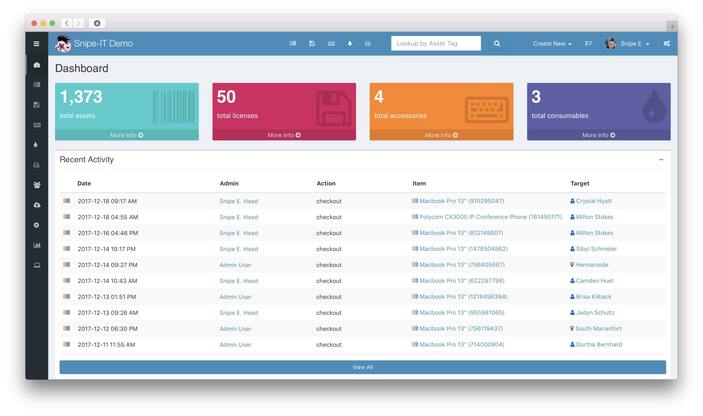
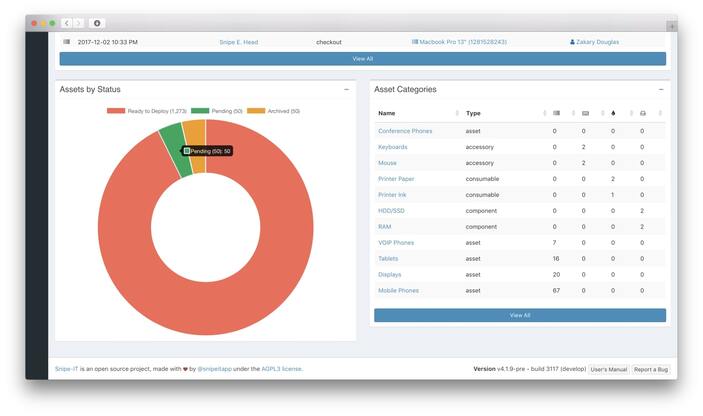
Key Features
-
Asset tracking with a focus on hardware
-
User assignment and check-in/check-out workflows
-
QR code and barcode generation
-
Maintenance and warranty tracking
-
Basic license management
-
Reporting and a powerful REST API
Pros and cons of Snipe-IT
Pros & Cons
- Completely free and open-source, no vendor lock-in
- Highly customizable for tech-savvy users
- Frequent updates and active community support
- Great for schools, nonprofits, and small teams needing a lightweight ITAM solution
- Requires self-hosting or paid cloud hosting
- Lacks auto-discovery and advanced SAM capabilities
- UI and UX less polished than commercial enterprise tools
Snipe-IT is a capable and transparent choice for organizations that value open-source flexibility and need dependable hardware tracking without the overhead of complex software management.
While it doesn’t include native discovery features or deep integrations, its focused, no-frills approach makes it an appealing choice in an ITAM comparison where budget matters most.
8.Ivanti Neurons for ITAM
Ivanti Neurons for ITAM is a powerful enterprise-grade platform that integrates IT asset management with automated discovery, endpoint intelligence, and workflow automation. Built to deliver full asset lifecycle visibility, it enables organizations to strategically manage their IT assets from acquisition to disposal with precision and control.
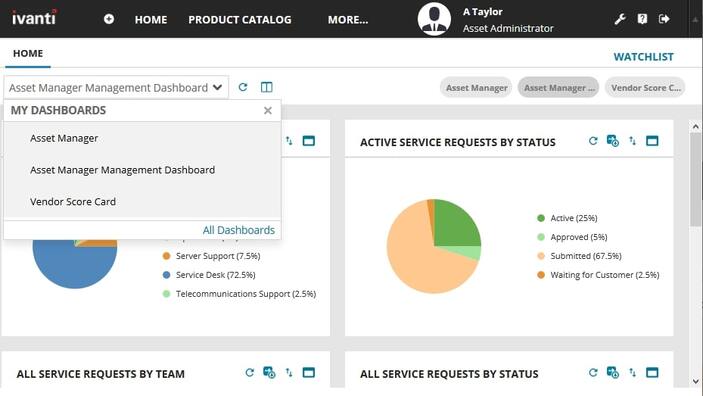
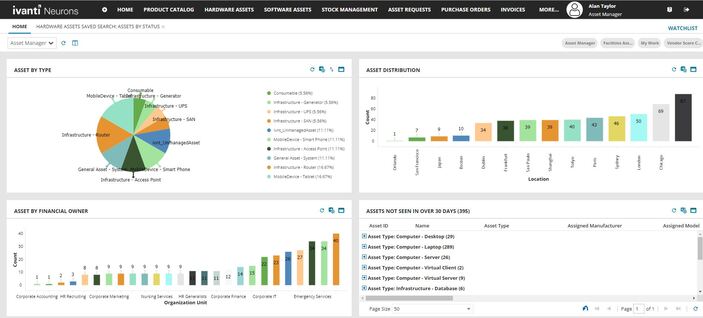
Key Features
-
Real-time discovery and inventory
-
Hardware and software asset management
-
License optimization and compliance
-
Barcode scanning and mobile asset updates
-
Contract and vendor management
-
Integration with CMDB and service management tools
-
Cloud-native with optional on-prem deployment
-
AI-powered automation (via Ivanti Neurons platform)
Pros and cons of Ivanti
Pros & Cons
- Strong native integration with endpoint and service management
- Real-time asset insights reduce downtime and overspend
- Mobile-friendly, with intuitive asset scanning and updates
- Automation bots enhance efficiency (e.g., Battery Monitor bot)
- Platform can be complex to configure for smaller teams
- Licensing and feature bundles may require close evaluation
- Primarily tailored for enterprise-level IT environments
Ivanti Neurons for ITAM stands out as a holistic, automation-first solution for organizations that need comprehensive control over IT assets and contracts. With real-time discovery, robust CMDB syncing, and a mobile-first approach, it offers strategic value beyond day-to-day tracking.
9. Flexera One (ITAM / FlexNet Manager Suite)
Strong focus on Software Asset Management (SAM) and licensing optimization makes Flexera One an enterprise-grade IT asset management system. Designed for big companies with complicated software environments, it guarantees compliance across on-site, cloud, and hybrid systems and helps find hidden expenses. The platform lowers risk and drives software efficiency by combining strong analytics, entitlement management, and usage data.
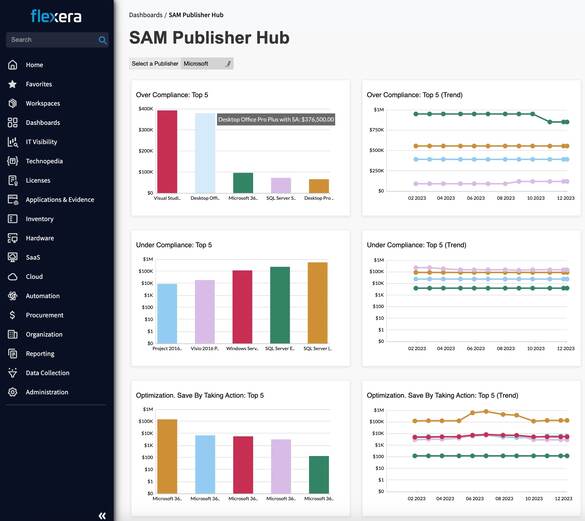
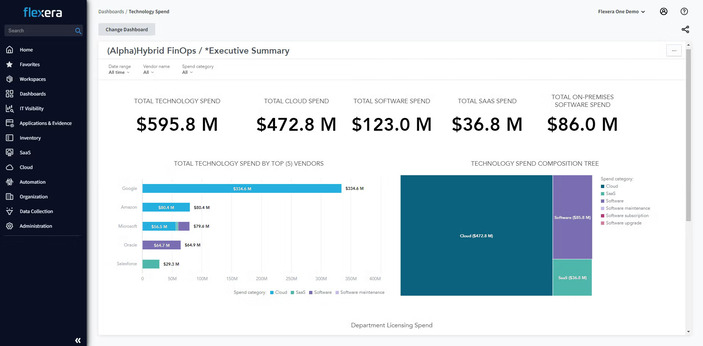
Key Features
-
Deep software license optimization and compliance
-
Entitlement and contract management
-
Cloud cost optimization across IaaS, PaaS, and SaaS
-
Vendor-specific license management (Oracle, IBM, SAP, Microsoft)
-
Software usage tracking and analysis
-
Hardware inventory via integrations
-
Extensive reporting and forecasting tools
-
Enterprise integration capabilities (ERP, ITSM, CMDB, etc.)
Pros and cons of Flexera One
Pros & Cons
- Recognized leader in SAM, especially for complex licensing environments
- Helps avoid vendor penalties and reduce overspend
- Deep vendor-specific knowledge and audit defense tools
- Scales well in multi-national, hybrid cloud environments
- High total cost of ownership
- Primarily focused on software assets, with less emphasis on end-to-end hardware lifecycle
- Requires considerable time and expertise to implement effectively
Flexera One is ideal for organizations with mature IT governance practices and significant software licensing complexity. With its rich SAM capabilities and strategic cost control features, it enables enterprises to optimize software usage, ensure compliance, and drive better vendor negotiations.
While less focused on day-to-day hardware tracking, its strengths in license management make it a top-tier solution for global enterprises seeking to master software spend.
10. Asset Panda
Designed to oversee both IT and non-IT physical assets, Asset Panda is a very flexible, cloud-based asset management tool. Reputable for its simplicity and strong mobile capabilities, it lets companies customize fields and procedures depending on their particular requirements.
Tracking laptops, cars, or contracts, Asset Panda provides a customizable solution fit for many different businesses and use situations.
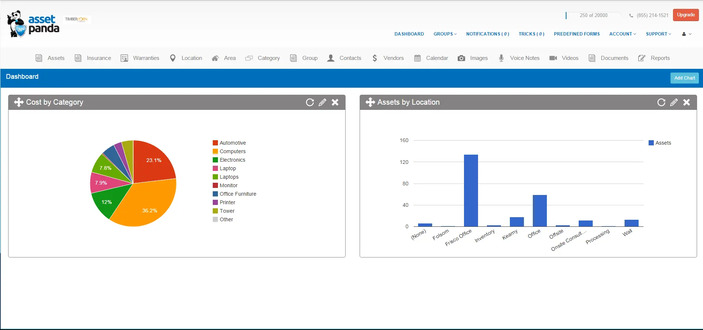
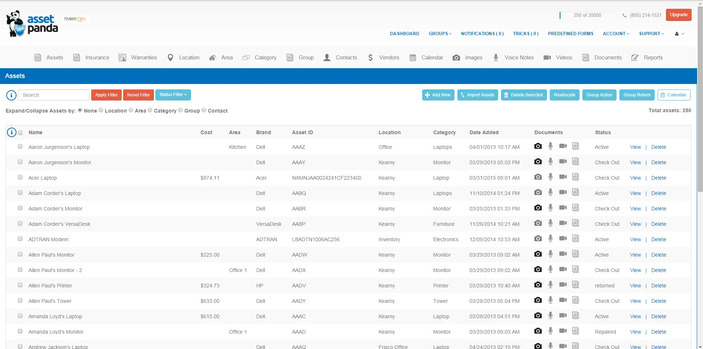
Key Features
-
Customizable fields, roles, and workflows
-
Mobile app with barcode/QR code scanning
-
Check-in/check-out capabilities
-
Maintenance and lifecycle tracking
-
Reporting and dashboard analytics
-
Integration with popular business tools (via API or direct sync)
-
Unlimited users with role-based permissions
-
Audit trails and compliance support
Pros and cons of Asset Panda
Pros & Cons
- Extremely flexible and user-configurable platform
- Strong mobile app support for real-time scanning and updates
- Ideal for physical asset tracking beyond just IT hardware
- Quick to deploy with helpful onboarding and support
- Cost-effective compared to larger enterprise IT platforms
- Less emphasis on automated software discovery or deep Software Asset Management (SAM) compliance
- More focused on physical asset tracking than full IT lifecycle visibility
- Limited built-in analytics compared to dedicated ITAM platforms
Asset Panda is an excellent choice for organizations seeking a highly adaptable platform for managing physical assets without the complexity of a traditional enterprise system. It shines in environments where mobile access, barcode scanning, and customizable workflows are priorities.
While it may not provide the deep SAM features of specialized ITAM software, it offers powerful capabilities for teams needing agile, cloud-first asset tracking across the board.
11. SysAid (ITAM Module)
By providing a consistent ITSM solution with built-in IT asset management features, SysAid helps companies to centrally manage their assets and services. Recent improvements allow SysAid to provide more intelligent asset detection and enhanced visibility across the IT landscape.
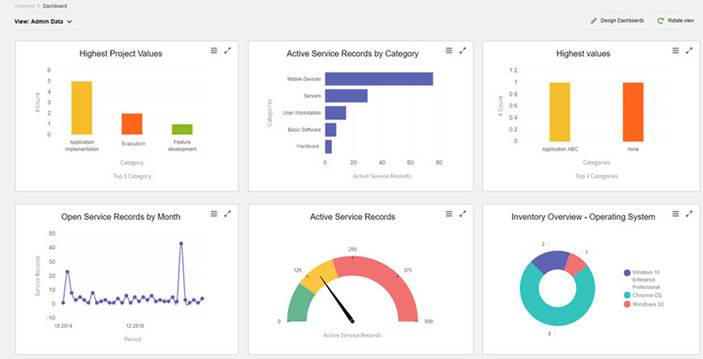
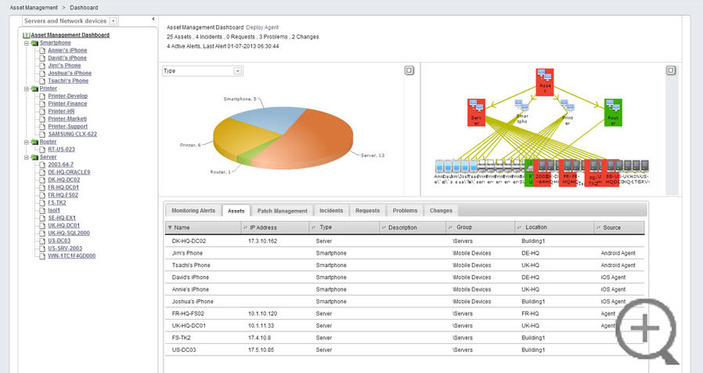
Key Features
-
Agent and agentless discovery
-
Hardware and software inventory
-
Integrated CMDB for asset-service mapping
-
Patch management and remote control integration
-
Tight coupling with SysAid’s ITSM features
-
Role-based access and automation tools
-
Alerts, monitoring, and lifecycle insights
Pros and cons of SysAid
Pros & Cons
- Seamless integration of ITAM with service management processes
- Advanced discovery through Lansweeper partnership
- Includes valuable tools like remote access and patch management
- Improves accuracy of asset data for service delivery and security
- Strong automation and centralized dashboard for tracking
- Primarily effective within the SysAid platform
- May not match the depth of specialized, standalone ITAM or SAM solutions
- Less robust license optimization compared to leading enterprise SAM tools
SysAid is a solid choice for organizations already using or considering its ITSM platform and looking to unify service and asset management under one roof. Its strength lies in integration and usability within its own ecosystem, supported by recent improvements in asset discovery and intelligence.
As an IT asset tracking software, SysAid delivers the essentials for visibility, control, and streamlined IT operations, especially for mid-sized IT teams.
12. Zluri (SaaS Management Platform with ITAM Capabilities)
Zluri positions itself as a modern SaaS Management Platform (SMP) that doubles as a strong IT Asset Management solution, particularly for organizations looking to bring order to sprawling SaaS environments.
With cloud-first IT becoming the norm, Zluri helps IT, Finance, and Procurement teams gain deep visibility into all software subscriptions, user access, and spend across the company.
Its strength lies in automating SaaS discovery, tracking usage at the user level, and optimizing spend through intelligent recommendations. Unlike traditional ITAM platforms that focus more on on-premise or hybrid infrastructure, Zluri shines in SaaS-heavy ecosystems where Shadow IT and wasted licenses are common risks.
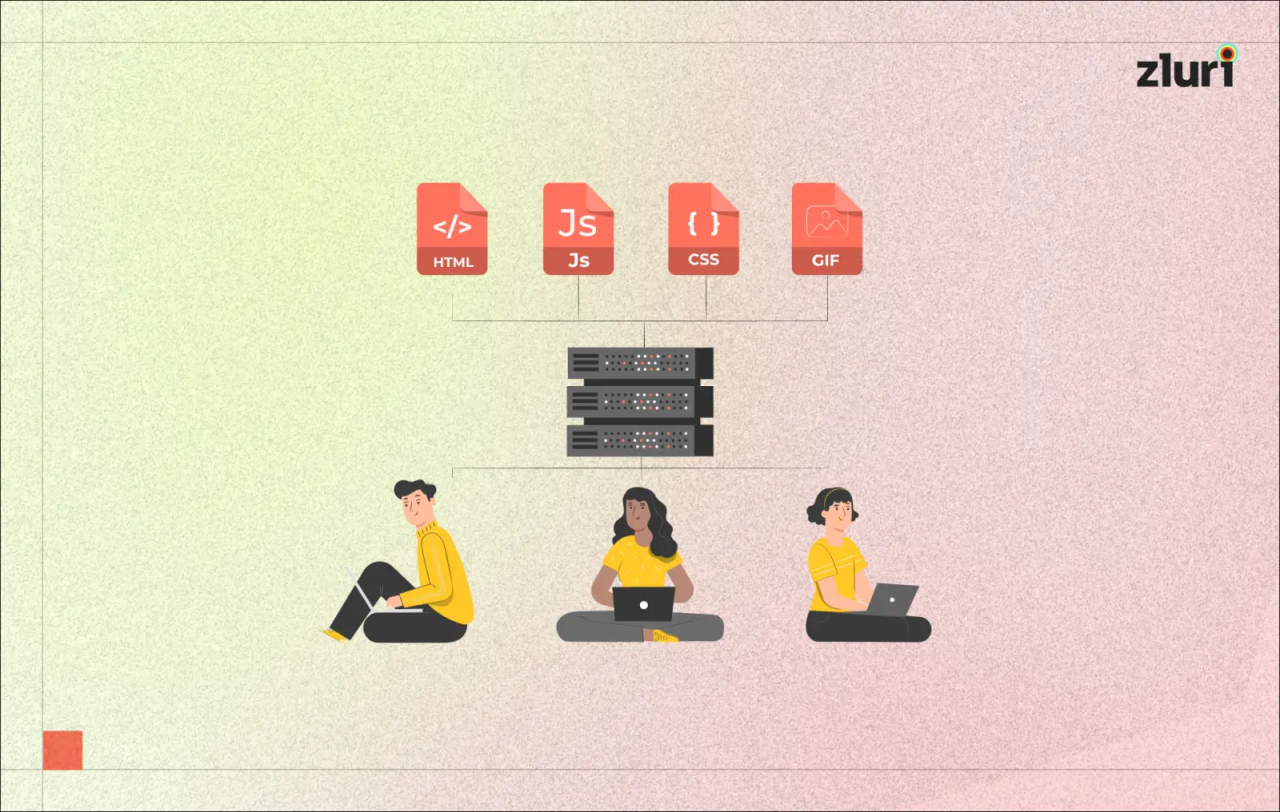
Key Features
-
Automated SaaS discovery across 800+ apps
-
Centralized software license tracking & compliance
-
User-level SaaS usage insights and optimization
-
Renewal calendar with proactive alerts
-
Vendor management and contract repository
-
Role-based access controls and onboarding/offboarding workflows
-
Integrations with HR, Finance, and IT systems
Pros and cons of Zluri
Pros & Cons
- Excellent for organizations with large SaaS adoption
- Reduces Shadow IT risks by uncovering unsanctioned apps
- Helps control SaaS spend with actionable cost-saving insights
- Streamlined onboarding and offboarding improves security and compliance
- Simple, modern interface with quick deployment
- More SaaS-focused, less suited for deep hardware lifecycle management
- Advanced features like workflow automation may require higher plans
- Better fit for cloud-first businesses than traditional infrastructure-heavy IT setups
Editor’s Choice: Why Motadata’s Integrated ITAM Excels
When comparing the best IT Asset Management tools, Motadata stands out for its unified and modern approach. Built as part of the ServiceOps suite, its ITAM capabilities are designed to work seamlessly alongside ITSM and AIOps functionalities.
This creates a connected environment where assets aren’t just tracked,they’re part of an intelligent, responsive IT ecosystem.
Here are the standout features that make Motadata a top choice:
- Contextual asset visibility across ITSM and AIOps so every asset event contributes to smarter incident, problem, and change management
- Automated asset discovery for hardware and software across hybrid environments including on-premise, cloud, and remote endpoints
- Unified CMDB integration to maintain a single source of truth for all assets, configurations, and dependencies
- License and contract management that helps avoid overspending and ensures timely renewals
- Policy-based automation that simplifies routine tasks like onboarding, disposal, and compliance enforcement
- Real-time asset lifecycle tracking from procurement to retirement with minimal manual input
- Modern, user-friendly interface that ensures fast onboarding and minimal training for IT teams
Motadata delivers a high level of configurability while keeping things simple for users. This balance makes it an ideal solution for organizations that need advanced features without the overhead of managing a complex platform.
In the landscape of the best IT Asset Management tools, Motadata offers the kind of intelligent alignment between operations and assets that helps IT teams move from reactive to strategic.
Conclusion: Choosing the Right Foundation for Asset Control
Selecting among the best IT asset management tools requires going outside feature lists. Whether it’s cost control, enhanced compliance, or security improvement, it’s about matching the capabilities of a platform to the particular objectives of your company.
If cost control is your top concern, search for products with integrated contract visibility and licensing optimization.
For stronger governance, ensure the platform supports lifecycle tracking, patch integration, and robust CMDB functionality. And for better security posture, prioritize discovery tools that offer real-time updates and alerting for unauthorized devices.
A well-matched solution also reduces IT friction by integrating seamlessly into service management workflows. This is where platforms that unify ITAM with ITSM, like Motadata, shine,ensuring IT asset data is always current, contextual, and actionable.
Ultimately, the right IT asset tracking software doesn’t just monitor hardware and software. It empowers your team to act decisively, reduce risk, and stay ahead of operational challenges.
Take the Next Step with Motadata
The ServiceOps platform Motadata aggregates AIOps, ITSM, and IT Asset Management into one simplified, AI-powered solution.
Motadata offers the depth and flexibility required to take control of your environment whether your objectives are to remove manual tracking, lower asset-related downtime, or obtain a more accurate perspective of your IT landscape.
Motadata should be on your shortlist for the best IT Asset Management tools if you’re assessing them based on modern architecture and natural integration with more general IT operations.
You can explore ServiceOps Asset Management to understand how it helps manage the entire asset lifecycle, from discovery to disposal. Ready to dive in? Request a demo to see it in action, or start a free trial and experience firsthand how Motadata simplifies and enhances asset tracking and governance.
Discover how Motadata transforms asset data into real-time operational intelligence. It is not just another tool, but a strategic choice among the best IT Asset Management tools available in 2025.
